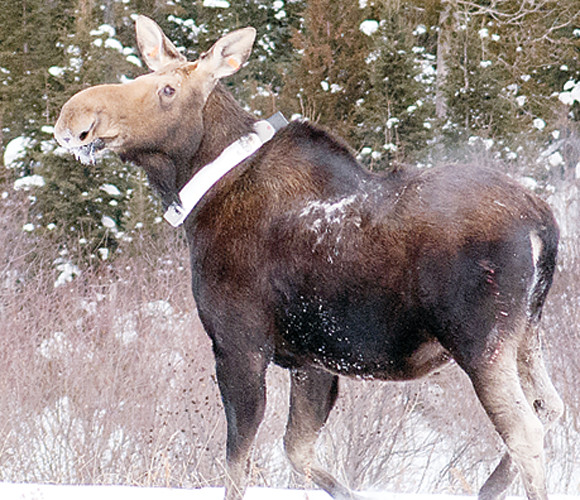Support the Timberjay by making a donation.
Moose deaths spike, but causes don’t point to trend
Five animals have died since June in the ongoing DNR study
REGIONAL—Mortality among animals within the Department of Natural Resources’ ongoing moose study has spiked in the past several months, but it appears to be driven more by random events than any …
This item is available in full to subscribers.
Attention subscribers
To continue reading, you will need to either log in to your subscriber account, or purchase a new subscription.
If you are a current print subscriber, you can set up a free website account and connect your subscription to it by clicking here.
If you are a digital subscriber with an active, online-only subscription then you already have an account here. Just reset your password if you've not yet logged in to your account on this new site.
Otherwise, click here to view your options for subscribing.
Please log in to continue |
Moose deaths spike, but causes don’t point to trend
Five animals have died since June in the ongoing DNR study
REGIONAL—Mortality among animals within the Department of Natural Resources’ ongoing moose study has spiked in the past several months, but it appears to be driven more by random events than any underlying cause.
Since June, five of the 75 collared animals in the agency’s ongoing moose study have died, and that boosts the mortality rate among the study’s cohort to 15 percent so far this year, somewhat higher than the 8-12 percent annual mortality more commonly found in North America. Since 2013, when the study began, moose survival has ranged from 81 percent (2013) to 88 percent in 2014. Last year, 85 percent of the GPS collared moose in the study survived.
While much of the focus of the moose research has been on underlying health concerns, particularly high parasite loads, DNR researchers have linked only one of the five moose deaths since June to parasites or related illnesses, although liver infection could have been a contributing cause of one of the deaths.
The June 10 death of a moose cow, with a calf, was determined to be the result of a wolf attack. Another cow moose died in August, after being hit by a vehicle. That moose was found to be lactating at the time, so the death may have resulted in additional moose mortality. The DNR’s necropsy of the animal confirmed a significant parasite load, which may have contributed to her being struck by a vehicle.
Then again, notes the DNR’s Michelle Carstenson, it could “have been in the wrong place at the wrong time.”
Just four days later, the DNR’s moose team responded to a mortality signal on a four-year old bull, which appeared to have fallen, or “tipped” over. The moose was severely undernourished and weighed only 700 pounds at the time of necropsy. Researchers found the animal’s body cavity full of fluid and its liver badly compromised by parasites, which appear to have induced hepatitis.
On Sept. 25, a Fond du Lac band member harvested one of the study’s bulls, one of only a handful of moose still being taken by tribal hunters. The hunter contacted the DNR’s moose team and provided the location of the gut pile so researchers could collect samples from the organs to assess overall health. The bull appeared to be in prime condition, likely 5-7 years of age, with a beautiful rack and tests of the organs confirmed the animal was in good health.
Researchers euthanized a very large bull on Oct. 25, after finding it near death due to a leg infection. Researchers noticed a puncture wound on its leg, which may have been the source of the infection. Such infections are frequently the result of predator attack, but DNR officials didn’t speculate on the cause of the leg injury and subsequent infection.
The loss of the five moose, combined with collar failures, has reduced the number of moose with working collars to just 40, as of Dec. 10. Researchers had intended to add adult animals to their study annually, but Gov. Mark Dayton suspended the GPS-collaring of moose in early 2015, following high numbers of capture-related mortalities and abandonments on a separate, but related, study on moose calves.






